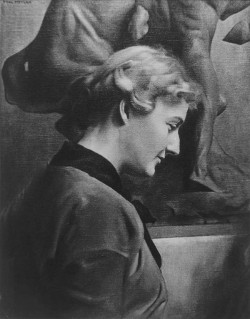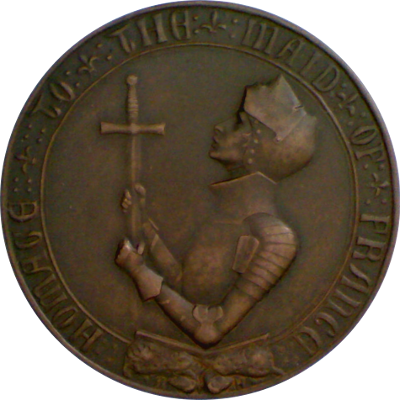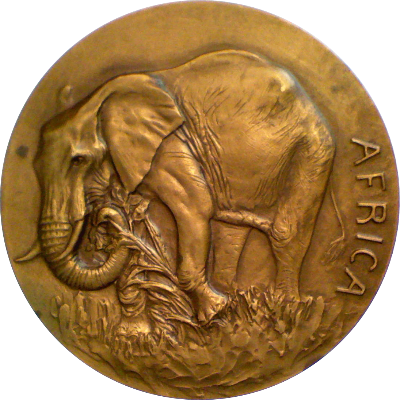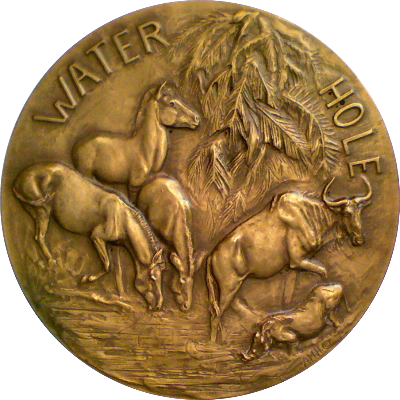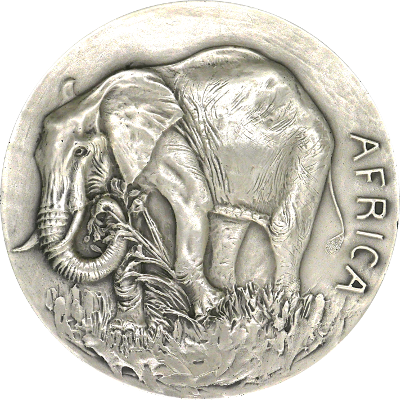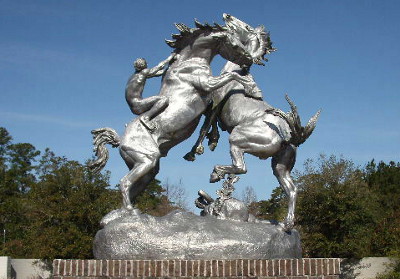Anna Hyatt Huntington was born Anna Vaughn Hyatt in Cambridge, Massachusetts, in 1876. Her father, Alpheus Hyatt, was a professor of paleontology and zoology at Harvard University and MIT. Her mother, Aduella Beebe Hyatt, was an amateur landscape artist. It is generally believed that Anna inherited her interest in animals from her father and her artistic talent from her mother.
Anna Hyatt developed an enthusiastic interest in horses early and life and created a lot of drawings and clay models of horses and other farm animals. Despite this early interest in sculpture she studied to become a violinist. At age 19 she helped fix the broken foot of a sculpture created by one of her older sisters. The sisters worked well together and her sister convinced Anna to collaborate on a sculpture that included the family dog. The sculpture was exhibited by one of the National Arts societies and ended up being purchased by a collector. Having greatly enjoyed the experience and also achieved unexpected success, Hyatt turned away from the violin and took up sculpture. She studied under Boston sculptor Henry Hudson Kitson. Her Boston years came to an end when her sister married and her father died.
Hyatt moved to New York City to continue her art studies.She enrolled at the Art Students League where she studied under George Grey Barnard, Hermon MacNeil, and Gutzon Borglum. She left formal instruction to study independently and spent a lot of time at the Bronx Zoo, returning to her favorite animal theme. After collaborating for a while with another young female sculptor, Abastenia St. Leger Eberle, she moved to Europe in 1907.
Rather than studying with the European masters she continued her independent work in Auvers-sur-Oise. In 1908 she modeled two Jaguars that were exhibited at the Paris Salon. She also created a giant lion for a high school in Dayton, Ohio. Her breakthrough came with an equestrian statue of Joan of Arc. For many years Hyatt had wanted to create a life-sized equestrian Joan of Arc. At the Paris Salon of 1910 her early model of the statue won an honorable mention. As a result of this success, the city of New York commissioned her to create a statue commemorating Joan of Arc's five-hundreth birthday. On December 6, 1915, her finished Joan of Arc sculpture was unveiled in an elaborate ceremony, which included a military band and the French Ambassador. Many other large commissions and the honors accompanying her success followed over the next decade.
In 1923 she worked with railroad heir and philanthropist Archer Milton Huntington on putting together a sculpture exhibition for his beloved Hispanic Society. The two quickly fell in love and were married on March 10th, 1923. This union turned out to be more influential on American sculpture than any other event because the couple went on to found Brookgreen Gardens together. Brookgreen Gardens is more than just a sculpture park. During the Depression, commissions and acquisitions from Brookgreen Gardens threw a lifeline to struggling sculptors. In its first six years of existence (1931-1937) Brookgreen acquired 197 pieces of sculptural art, laying the foundation for a collection that now encompasses more than 900 major sculptural pieces.
Anna and Archer Huntington lived a happy and fulfilled life until his death in 1955. She remained productive as a sculptor into her 80s with the exception of a brief period starting in 1927 when she contracted Tuberculosis and had to cut back work on major pieces. In the last two decades of her life she felt more and more disconnected from the sculptural mainstream. In the 1950s the referred to modernism as
"an overwhelming flood of degenerate trash drowning sincere and conservative workers in all the arts."
She died on October 4, 1973, in Redding, Connecticut, following a series of strokes. She is buried at Woodlawn Cemetery in New York City, New York in the Huntington Family Tomb with her husband Archer Huntington, the philanthropist who founded the Hispanic Society of America in New York City. While she and Archer do not live on through children, the couple nurtured classic American sculpture through some very difficult times and preserved it for posterity. Carl Paul Jennewein, a contemporary and friend of theirs, put it succinctly on a medal honoring the couple: "Amici Humani Generis" or, in English, "Friends of the Human Race."
Sourced from material listed in the Resources sction.
